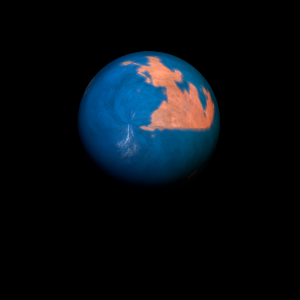|
|
Space Astro
|
Info for exoplanet "Aesida"
| Scientific (actual) data |
|---|
| Name | Kepler-1336 b |
| Planet status | Confirmed |
| Radius | 0.177 |
| Orbital period | 23.1987 |
| Discovered | 2016 |
| Updated | 2021-02-05 |
| Tconj | 2454980 |
| Publication | Announced on a website |
| Detection type | Primary Transit |
| Alternate names | 2MASS J19450665+4653594 b, K02748.01, KIC 9962455 b, KOI-2748 b, KOI-2748.01, WISE J194506.64+465359.3 b |
| Star name | Kepler-1336 |
| Right ascension | 296.28° |
| Declination | 46.9° |
| Mag j | 12.819 |
| Mag h | 12.423 |
| Mag k | 12.366 |
| Star distance | 822 |
| Star metallicity | 0.05 |
| Star mass | 0.94 |
| Star radius | 1.3 |
| Star age | 12.3 |
| Star temperature | 5512 |
| Star alternate names | 2MASS J19450665+4653594, KIC 9962455, KOI-2748, WISE J194506.64+465359.3 |
| Wikipedia article | Kepler-1336 b |
Back
| |
| Fictional info (?) |
|---|
| Suggested name | Aesida |
| Planet type | Cold planet |
| It is a cold planet planet with a mass one-thousandth that of Kepler-1336, but two-and-a-half times that of all the other planets in its solar system combined. It is the coldest planetary atmosphere in its solar system, with a minimum temperature of 65°K (-208°C), and has a complex, layered cloud structure with hydrogen deuteride (HD) thought to make up the lowest clouds, and 2H2O the uppermost layer of clouds. |
| Atmosphere | 2H2O | 25% |
| Hydrogen deuteride (HD) | 22% |
| Ammonia | 21% |
| Nitric oxide | 12% |
| Argon | 8.6% |
| Hydrogen | 8.5% |
| Sulfur dioxide | 0.65% |
| Ammonium hydrosulfide (NH4SH) | 0.2% |
| Nitrogen | 0% |
| Atmospheric pressure | 0.0011 bar |
 |
| No known satellites |
| Google search for Aesida |
|
Website by Joachim Michaelis
|
|
|
|